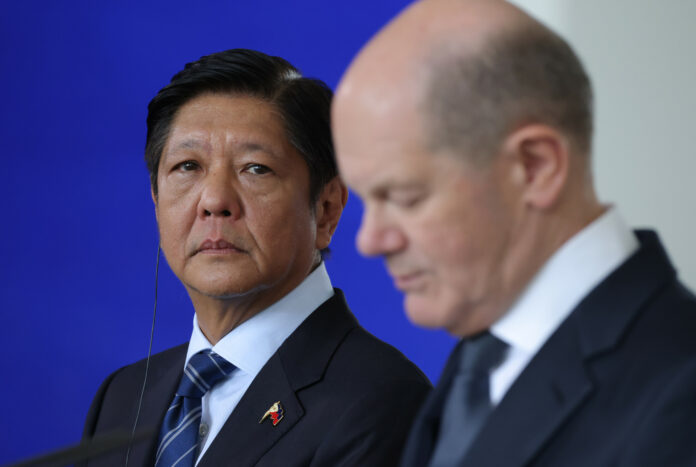Competing historical narratives have taken center stage in the China-Philippines territorial dispute, with Manila taking aim at Beijing’s assertion it was the first to lay claim to the South China Sea.
The Philippine foreign affairs department on Sunday hit back at its Chinese counterpart’s “baseless and misleading” appeal to history last week.
China claims sovereignty over nearly all of the South China Sea, including waters nearly 700 miles from Chinese shores that fall within the internationally recognized 200-nautical mile (230-mile) exclusive economic zones (EEZ) of the Philippines and several other Chinese neighbors.
A panel of judges at the Hague’s Permanent Court of Arbitration largely dismissed China’s claims in a 2016 ruling Beijing contends is “illegal.”
The Chinese foreign ministry spokesperson Wang Wenbin said last week China was the first to “name, explore, and exploit Nanhai Zhudao (South China Sea islands) and relevant waters.” Islands and other features in the disputed waterway are the basis for China’s internal waters, territorial sea, contiguous zone, continental shelf, and EEZ, Wang said.
A contiguous zone is an area extending 12-24 nautical miles beyond a nation’s territorial waters and within which coastal states have some jurisdiction. An EEZ is a zone where a state can claim the sole right to natural resources.
Scarborough Shoal and other China-claimed features in the South China sea—many of which are considered rocks and submerged reefs by maritime law and are ineligible for territorial waters of their own—lie over 600 miles from the nearest Chinese province Hainan.
“The Philippines has long had sovereignty and exercised administrative control over Bajo de Masinloc, as well as various features west of Palawan which now form the Kalayaan Island Group,” the Philippines’ foreign affairs department wrote in a statement on Sunday using Manila’s term for Scarborough Shoal.
These features were included on administrative maps as early as the 18th century during the Spanish colonial era, the department added. It went on to point out China’s claims in the area are “without legal effect,” citing the arbitral court’s 2016 decision.
The statement dismissed spokesperson Wang’s claim the Philippines was using the South China Sea issue to “undermine peace and stability in the region.”
The Chinese foreign ministry and Philippine Department of Foreign Affairs did not immediately respond to written requests for comment.
Bill Hayton, associate fellow with the Asia-Pacific Programme at London’s Chatham House think tank, has said that China’s claims over large swaths of the sea are rooted in the early 20th century efforts.
Sean Gallup/Getty Images
During this time, Chinese nationalists sought to build territorial legitimacy at a time when foreign powers were exploiting the Qing Dynasty’s fragility.
The U.N. has estimated over one-fifth of global trade passes through the South China Sea each year.
China deploys its coast guard and paramilitary forces to back its claims in the heavily trafficked waterway.
The increasingly aggressive behavior exhibited by Chinese ships toward Philippine government patrols and supply missions are at the heart of the escalating tensions.
The Philippines shares a Mutual Defense Treaty with the U.S., that President Joe Biden has called “ironclad.”
U.S. Secretary of State Antony Blinken is scheduled to arrive in Manila on Monday. His meeting with Philippine President Ferdinand Marcos Jr. on Tuesday will include discussions on cooperation and security, according to a press release from Marcos’s office.
Uncommon Knowledge
Newsweek is committed to challenging conventional wisdom and finding connections in the search for common ground.
Newsweek is committed to challenging conventional wisdom and finding connections in the search for common ground.


